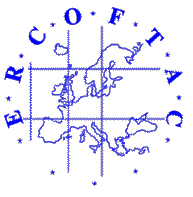 |
 |
 |
|
| Institute of Thermomechanics AS CR, v.v.i. | CTU in Prague Faculty of Mech. Engineering Dept. Tech. Mathematics | MIO Université du Sud Toulon Var - AMU - CNRS - IRD | Czech Pilot centre ERCOFTAC |
| The Bernoulli Equation in Nanochannels | |
| Prevenslik T. | |
Abstract: | |
| The Hagen-Poiseuille equation of fluid mechanics based in classical physics that assumes a no-slip condition at the channel wall cannot explain the dramatic increase in flow found in nanochannels. Even if slip is assumed at the wall, the calculated slip-lengths necessary to explain the flow enhancement exceed the typical slip on non-wetting surfaces by 2 to 3 orders of magnitude. QM differs from classical physics. QM stands for quantum mechanics. Enhanced flow at the nanoscale is proposed to be the consequence of the size effect of QM that causes the viscosity of the fluid to vanish that otherwise does not occur in flow at the macroscale. In nanochannels, the fluid atoms are placed under EM confinement that by QM requires their heat capacity to vanish thereby precluding the conservation of viscous heating by the usual increase in temperature. Instead, conservation proceeds by QED inducing the viscous heat to create EM radiation that charges the atoms or is lost to the surroundings. EM stands for electromagnetic and QED for quantum electrodynamics. To explain the flow enhancement, MD finding basis in classical physics that assumes the atoms always have heat capacity is no longer valid by QM. MD stands for molecular dynamics. Therefore, MD algorithms were modified to assure the viscous heating does not increase the temperature of the fluid atoms by constraining temperatures near absolute zero to avoid temperature dependent atomic velocities. Conservation of viscous heat then proceeds by QED inducing EM radiation that charges the atoms thereby producing Coulomb repulsion allowing the viscosity to vanish as the atoms separate. The MD simulations suggest the flow in nanochannels should be frictionless given by the Bernoulli equation. Indeed, flow experiments on various fluids reported in the literature are shown to be reasonably upper bound by the Bernoulli equation. | |
Keywords: | |
| Hagen-Poiseuille, Bernoulli, molecular dynamics, quantum mechanics | |
| Fulltext: PDF DOI: No Doi | |
| In Proceedings Topical Problems of Fluid Mechanics 2015, Prague, 2015 Edited by David Šimurda and Tomáš Bodnár, pp. 167-174ISBN 978-80-87012-55-0 (Print)ISSN 2336-5781 (Print) | |
 Login
Login Powered by
Imce 3.0 © 2014, Pavel Formánek, Institute of Thermomechanics AS CR, v.v.i. [generated: 0.1226s]
Powered by
Imce 3.0 © 2014, Pavel Formánek, Institute of Thermomechanics AS CR, v.v.i. [generated: 0.1226s]